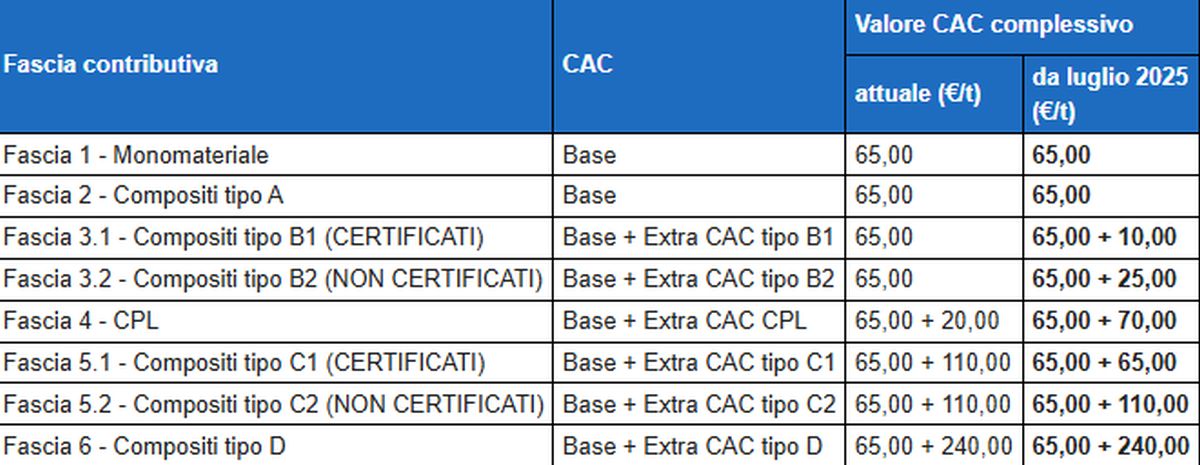MILAN (ITALPRESS) – In a situation of rapidly changing economic contexts, which are difficult to predict well in advance, the Rilegno, Corepla and Coreve consortia have updated their estimates of their balance sheet situation and consequent financial projections for 2025, which call for an increase in environmental contributions to ensure their operational management.As was the case at the end of 2023, albeit in different ways for each material, the last few months have witnessed – within a general inflationary framework – a series of cost increases related to the collection of packaging waste and the consequent activities associated with its recycling, which are increasingly complex for some materials. At the same time, a decrease in revenues from the post-consumer sale of materials has been observed, especially for glass scrap.In addition, the Comieco consortium has expressed its intention to continue on the path of contribution modulation linked increasingly to the effective and certified recyclability of paper-based composite packaging.CONAI has therefore evaluated and approved the requests for remodulation of the environmental contribution (or CAC) and the related justifications submitted by the aforementioned consortia for wood, plastic and glass packaging and for paper-dominant composite packaging.All changes will take effect as of July 1, 2025, with a second increase planned for the glass environmental contribution as of January 1, 2026.Also in view of the developments expected for the second half of 2025, related to the renewal of the National Agreement with ANCI-which has just been extended by six months-CONAI will continue to monitor the performance of the material supply chains affected by these remodulations.The diversification project for paper packaging, initially launched for paper-dominated composite containers suitable for containing liquids (CPL), is expanded to improve the effectiveness of recycling complex cellulosic-based packaging by consolidating and developing collection and sorting activities to obtain a homogeneous waste stream to be sent to a dedicated recycling stage. At the same time, an important discount is introduced for composite packaging other than liquid packaging that has undergone a laboratory test conducted according to the UNI 11743:2019 standard and for which the level of recyclability has been assessed according to the Aticelca 501 assessment system.Starting in 2019, in fact, an additional fee (Extra CAC) was introduced for CPLs, later extended to other types of cellulosic-dominant composite packaging in 2022: resources from Extra CACs are aimed at promoting the market introduction of composite packaging that is more easily recyclable, incentivizing the adoption of dedicated sorting and recycling technologies, and covering the higher energy and environmental costs resulting from the presence of non-cellulosic fractions in these specific packages.The current six will be increased to eight bands for paper packaging.The first remains dedicated to single-material packaging and the second to type A composites, where the weight of the paper component is between 90 percent and 95 percent of the total weight of the packaging.The band dedicated to type B composites, where the weight of the paper component is between 80 percent and 90 percent of the weight of the packaging, which had been exempt from the contribution until now, will be doubled. One will be dedicated to B Aticelca 501-certified composites (B1) and one to non-certified composites (B2). At the end of an initial testing phase, it is possible that for type B composites, the values of the Extra CAC will change.The band dedicated to type C composites, with a weight of the paper component between 60 percent and 80 percent of the total, will also be doubled: those certified C Aticelca 501 will be considered type C1, and those that are not certified will be considered type C2.Finally, a final band remains dedicated to type D composites, in which the weight of the paper component is less than 60 percent of the total weight of the packaging or is not made explicit.-photo Conai press office-(ITALPRESS).

